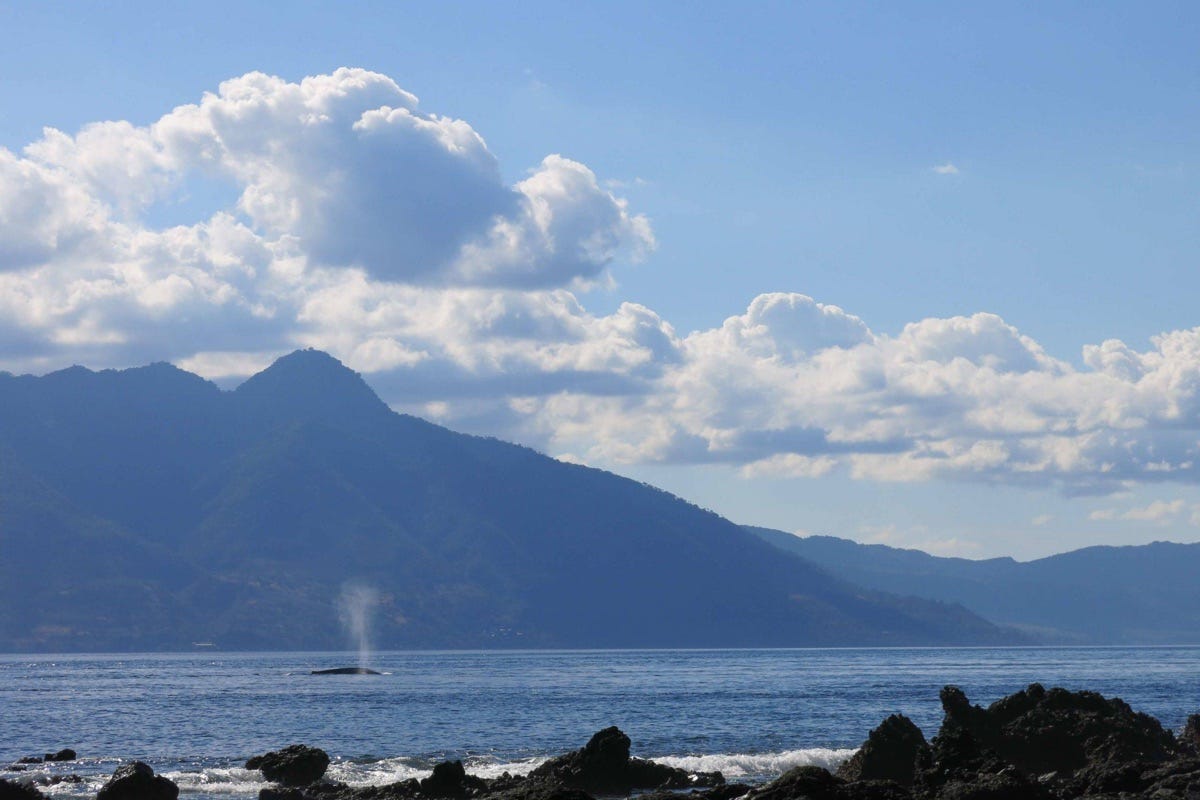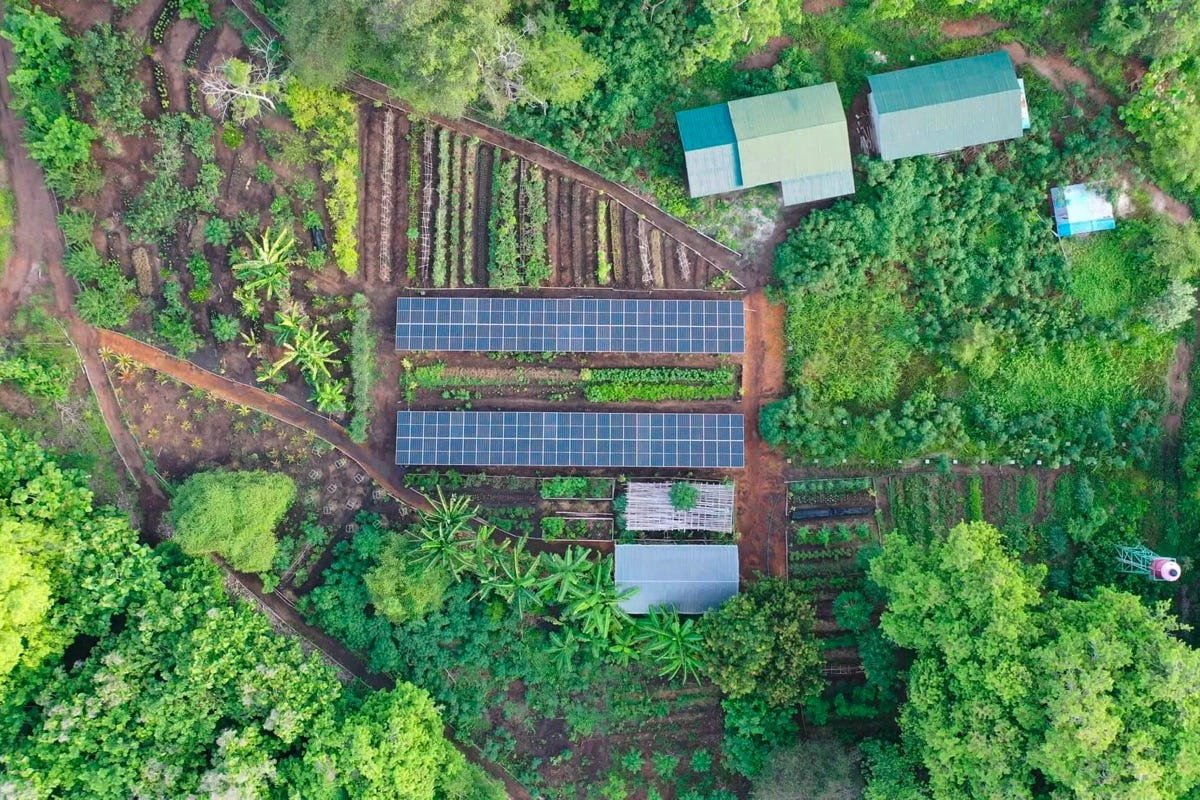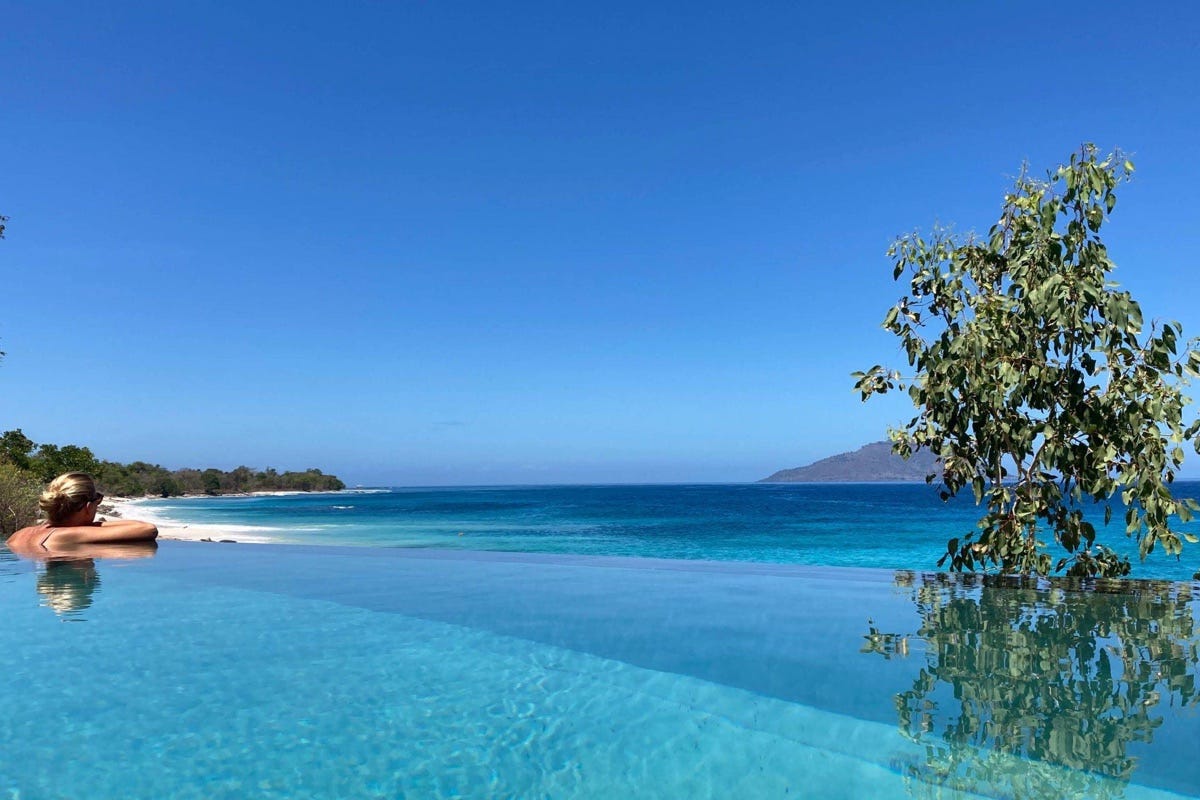A quick word of introduction. My name is Stuart McDonald and this is Couchfish—the perfect tub of ice-cream for the traveller stranded on the couch. The newsletter has a paid edition which traces a fantasy itinerary through Southeast Asia, and a free edition that covers, well, everything else. You’re reading the latter here, but if you’d like to read the former, you can upgrade your subscription via the button below. Thanks!
It started with a single line email from a Travelfish reader. I knew they were somewhere out east, and we were trying to arrange a date and time to meet once they got to Bali. They wrote: “Will pencil in the 11th... found a place in Halerman, Alor, just delightful!”
Regular readers will know I’m a big fan of Alor. Indeed, it is home to one of my all time favourite places to stay in the country. Part of Indonesia’s Lesser Sunda Islands, roughly due north of the frontier with Timor Leste, it is best known for diving, but it is an all round fab locale. So when my friends mentioned Halerman, and a great place to stay, my mind whirled.
Travelfish researchers in training, that’s Pantar Island in the distance. Photo: Stuart McDonald.
It whirled, because as far as I knew, there was only one place to stay in the area. An on-again off-again back-to-basics joint—with the emphasis on back-to-basics. When we met up, it didn’t take us long to get around to their Halerman lodgings. Nor for me to start ranting: “Another fancy-pants unsustainable joint in a remote location. Charging top dollar and bringing with it the demands on non-existent infrastructure.” You know me...
“Oh no,” they said, “you’ve got it all wrong,” and the more we talked, the clearer it became how wrong I was. “You’ve got to talk to them,” they said, “they’re doing great things.” So not long after, I did just that and after a couple of emails, picked up the phone.
Savu South Alor sits at close to the westernmost point of Alor. It has seven rooms—five set back off the beach to one side of the restaurant, and two villas perched on the other. The former share a pool while the latter each have a plunge affair. Prices are high, ranging from US$290 to $360 a night—and there I was thinking all Travelfish readers were on a budget!
Blue Whale passing by the Suva South Alor house reef. Photo: Savu South Alor.
Founders Johannes and Liliane have about 20 years in Indonesia between them—most of it in diving. With sustainability and a bunch of questions on my mind, we spend an hour chatting by phone, and we start with the obvious—how does one reconcile sustainability with attracting long haul guests to a remote area? Johannes is frank, but sees an upside:
“We’re far from perfect and I don’t think we ever will be. Many of our guests fly from Europe, the USA or Australia to get here. They come to the resort by speedboat. Whilst carbon offsetting can merely provide an absolution in a medieval sense, we’re actively looking for a trustworthy partner so we can offer this option to our guests; ultimately we are intending to implement a project for such cause directly here on Alor in our neighbourhood. None of this is ideal and is one of the reasons why we don’t call ourself an eco-resort.”
But then, there’s the upside, those guests who fly from afar, are an opportunity:
“We’re very passionate about the marine environment and her inhabitants and our goal is to share this with others while running this place under sustainable principles. I see guests as a sort of ambassador, and when they see what we’re doing and how we do it, we have the ambitious goal to turn our guests into ambassadors of the ocean and thereby support our cause.”
This is a popular view, but there’s little research that clearly supports it. In the case of Antarctica (one of the few places that has seen research on the topic) the evidence is varied and often not compelling. That said, I fell in love with Alor when I got there, so who knows, they might be on to something.
Typical Alor beach scenes. Photo: Stuart McDonald.
So there’s the pros and cons of guests from afar, but what about the place itself? To my mind there’s a need to not only to consider the guests’ impact, but the initial build as well. I mention my idea of a “carbon mortgage,” and the need to consider the build as well as running costs.
“Our block of land is around 7.5 hectares and we could have put far more rooms on it than we did. This links to another reason for not calling our place an eco-resort—the impact of our construction. Due to the remote location of our property, logistics were a big factor. We tried to source as much construction material as possible locally, but still had to ship in a lot, first from Surabaya to Kalabahi, and then from there down to our location. It’ll take us still a long time to offset all this, if we can at all.”
Another challenge is power—after all, the hum of a genset out back is as bad for guests as the planet. In Savu’s case, 100 solar panels means that they’re renewable-powered to 65-70% occupancy. As with many aspects of sustainability, there’s an economic impetus as well, says Johannes:
“There’s no grid to be on here, and no road to truck in fuel for the genset. If we’d wanted to be generator-powered, we’d have needed to transport fuel down by 35 litre jerry cans from Kalabahi [the capital, an hour away by small boat] which would have made no sense from either an environmental nor economic sense.”
Solar doesn’t come cheap—its costs represent around 20 to 25% of the total investment. They hope to recoup the investment within five years—an effort he hopes the location will aid with, quipping:
“Luckily, Alor has plenty of sunshine.”
Of course, remove the swimming pools, and the resort could get that much closer to never needing a genset. This is where the balance comes in—were there not swimming pools, would guests still come? Alor has glorious beaches and swimming, but also treacherous currents. At my above-mentioned fave joint, when the tide is running one way, guests are told, unequivocally: “do not get in the ocean.” It is around these sort of issues that sustainability surveys run by the likes of Booking.com could be explicit. Ask people if they prefer sustainable travel, but also ask would they feel the same way if it meant no horizon pools—or air-con.
Savu’s solar array, located at the centre of its permaculture garden—another plus for sustainability. Photo: Savu South Alor.
While they’re soaking up their power from afar, for labour they looked closer to home. Of their 30 staff, 20 are from local villages on Alor, the dive master is from Manado, the crew from Saparua near Ambon, and five others came via the Sumba Hospitality Foundation founded by Ibu Inge, and which offers vocational training in hospitality for local people. In the longer term this may put a cork in foreigners—or, as is often the case, Balinese—hoovering up remote management gigs. Savu is a case of this in action, and credit where due to the efforts of the Sumba Hospitality Foundation.
Much to the same mindset, Savu works with organisations focused on marine preservation. This topic is close to the founders’ hearts—one of their stated values is “pure oceanic passion”. It’s nice to have goals, but, as with many marine environments, the needs of tourism and fisheries don’t always overlap. Johannes is realistic—change will need to involve many, and will take time.
“There are problems with dynamite and cyanide fishing, neither of which are sustainable fishing methods. There is more work to be done, but it needs to involve all the stakeholders, from the marine authorities and tourism businesses through to the local fishers.”
Aside from liaising with umpteen stakeholders, simply having tourists present can help. As with discussions I’ve had repeatedly in Komodo and recently in Raja Ampat, a dive boat’s presence can act as a deterrent to activities not in the long term interests of all. But then, dive boats themselves—particularly liveaboards—can bring their own not-so-hot impacts. For this to work, having a long term view, shared across diverse interest groups, is essential.
So many blues. Photo: Savu South Alor.
On the far broader sustainability strokes, their view is a common one—at least among those who walk the talk. Often referred to as “green hushing,” it’s where places don’t make a big deal about what they’re doing. The reasoning varies—for some it might be the risk of not living up to their claims, for others, like Savu, it’s something else. Says Johannes:
“Terms like ‘eco-friendly’ and ‘eco resort’ have been so heavily abused, that we don’t want to be associated with them. For us it comes naturally that we’re as sustainable as possible.”
As I’ve written before, these terms are over-used and often applied in cases when they shouldn’t be. As with An Villa in Hoi An in the second part of my “Sustainable Vietnam” series, Savu do what they do because they feel it is the right way. Every place that Booking.com falsely lists as being on “100% Renewable energy” devalues the efforts of places like Savu.
We finish with me asking if there are plans for some budget shacks so that I can afford to visit. They’re not on their horizon, but next time I’m in Alor I’ll make my way down, even if only for an ice lemon tea overlooking the Savu Sea. If it does fall into your budget, I’ll refer you to what the Travelfish readers told me:
“Just delightful!”
Couchfish is 100 per cent independent and reader-supported. If you’re not already a subscriber, and you’d like to show your support, become a paying subscriber today for just US$7 per month—you can find out more about Couchfish here—or simply share this story with a friend.
Don’t forget, you can find the free podcasts on Apple, Pocket Casts and Spotify as well as right here on Couchfish.















